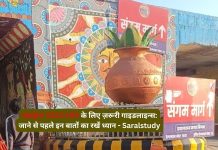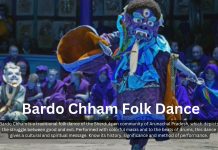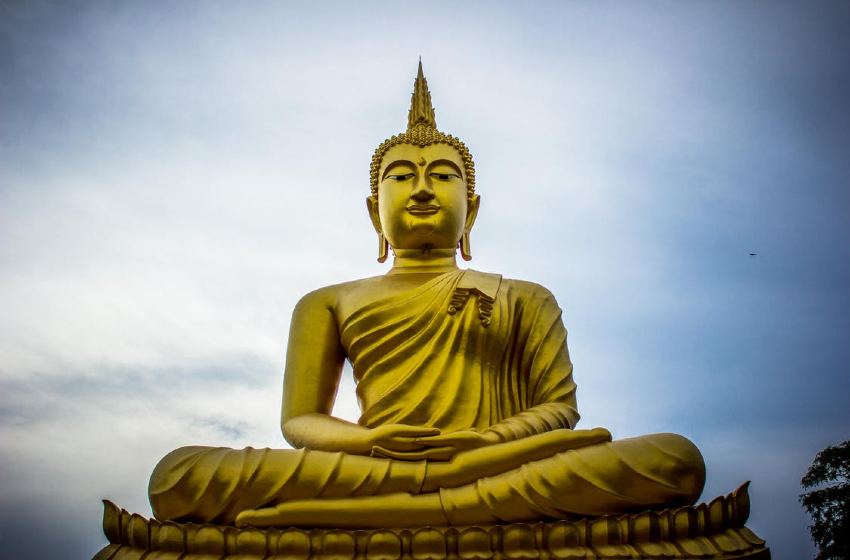Holi is a traditional Hindu festival, also referred to as Spring Festival, Colour Festival or Love Festival. Holi is the most popular of the three Indian festivals – Holi, Diwali and Dussehra. It is also the most secular festival although it has a touch of religiosity. This festival is celebrated on Full Moon Day in the month of Phalgun (February – March).
Origins of Holi’s Name
The word Holi is derived from the Sanskrit term Holaka, which refers to roasted grains or partially cooked harvests offered during ancient rituals. It is believed to symbolize purification and a new beginning by fire.
As mentioned in Bhav Prakash (A book on Ayurveda):
Trinagni bhrashtarth pkkashami dhanya hoalakah
ardhpakkashami dhanyastrina bhrashtashch holakah
holakolpanilo medah kafa dosha shramapah
Meaning: The half-cooked Shamo-Dhanya (pods) roasted on straw fire is called Holak. This Holak relieves the defects of Vata-Pitta-Kapha and fatigue.
- Holika (Outer Layer)
The term Holika refers to the protective outer covering of grains like wheat and barley. During rituals, the outer layers of grains burn away, representing the destruction of negativity, while the inner grain (symbolizing life and virtue) remains intact. - Holak (Half-Cooked Grains)
Holak refers to grains roasted in ritualistic fire. This practice celebrates the season’s harvest and is part of communal offerings to deities and ancestors, symbolizing gratitude.
Regional Names, Rituals and Holi Celebrations
Holi is the oldest festival and has taken different forms since pre-historic times. It was a festival adopted by both Aryans and non – Aryans alike. This festival is symbolic of new crops and the new year. It is a farewell to the past and an invocation to everything new.
This festival is known by different names in different parts of the country. ‘Phalguni Purnima’ has its source in the phage or phage, the powder used in Holi. The original colours used were red and green. Red is a symbol of desire and green stands for youth and vigour. In Bengal, it is known as ‘Dol Purnima’ from the swing in which sat Radha and Krishna. Orissa celebrates ‘Dol Jatra’. In Western India, in Goa and in the Konkan, it is called ‘Simagh’ in celebration of youth and vitality. It is ‘Madan Daman’ or ‘Kamayan’ in South India. Kamayan represents the fulfilment of desire. North India has just ‘Holi’ or ‘Hori’.
Cultural significance
Holi has three distinct aspects. It is symbolic of hope for new crops, youth and vigour as well as an invocation to the new year. It is said Phalguna was the last month of the year as stated in the Bavishya Purana. Some scholars are of the opinion that as the year comes back as ‘dol’ the festival was called ‘Dol Purnima’. This festival heralds the advent of spring. People are in a jubilant mood and feel rejuvenated.
History and rituals of Holi
The usual legends surround this festival. Hiranyakashipu, a mighty king worshipped Shiva and was fanatically opposed to Vishnu. His son Prahlad, on the other hand, was an ardent devotee of Vishnu. The father tried to destroy his son but failed. His sister Holika was immune to fire. He employed Holika to enter the fire with Prahlad on her lap. The unexpected happened. Holika was burnt to ashes and Prahlad emerged unscathed. The worshippers of Vishnu celebrated the occasion with the effigy of Holika. They celebrated the event with phage or powder on Phalguni Purnima Day. Holi was celebrated by the Vaishnavas, the followers of Vishnu.
Holi and Lord Krishna
The Vaishnav cult found expression in Radha and Krishna. The festival of Radha and Krishna on the swing or ‘dola’ is ‘Dol Purnima’. According to Srimadbhagvata, Putana, a female demon, tried to kill Krishna, who was the eighth, incarnation of Vishnu. When Krishna was a baby, his uncle, King Kansa ordered a general massacre of all babies. Putana is the disguise of a woman, who suckled infants to death. Krishna, knowing her for what she was, sucked her lifeblood and destroyed her. In Mathura and Brindavan, where the Krishna cult flourishes, the effigy of Putana is burnt. It is here, in the birthplace of Krishna, that Holi is celebrated with traditional songs, dances and spraying of colours.
Yet another legend associated with Holi is the destruction of Kamadeva, the God of Love by Shiva. Parvati, the daughter of Menaka and Himalaya was deeply in love with Shiva. At that time Shiva was immersed in deep meditation and took no notice of her. The Kama, in order to help Parvati, disturbed Shiva’s meditation. The enraged God with the power of his third eye reduced the Kama to ashes. Later, he was restored to life at the behest of Parvati. The meditation period of Shiva is considered to be a seasonal cycle, winter. The interruption leading to his marriage with Parvati signifies new life and fulfilment.
‘Dol Purnima’ is also the birthday of Gauranga or Chaitanya Mahaprabhu, a sixteenth-century Vaishnava saint of Bengal. ‘Dol Purnima’ therefore, has special significance for the followers of Vishnu.
Holi as a universal festival
The social customs connected with Holi are universal. The ancient Greeks and Romans, celebrated Baccalian, a fertility cult. In Europe, May Flower Day was celebrated and on this day free mixing among the youth was encouraged. According to the ancient belief, the Sky was the father and the Earth the mother and the horizon was the mating place. In Egypt, the concept was exactly the reverse. The ancient festival was celebrated by the side of the field. Holi, the most popular and yet secular festival, is celebrated by all, cutting across barriers of caste, creed and religion. People enjoy putting colour on one another. The young seek the blessing of the elders. It is a time for free mixing and taboos are ignored. It is a time of hope and joy because spring is in the air.
Also Read: Fairs and festivals in India





